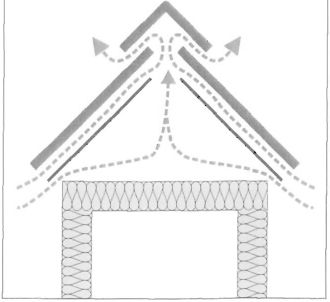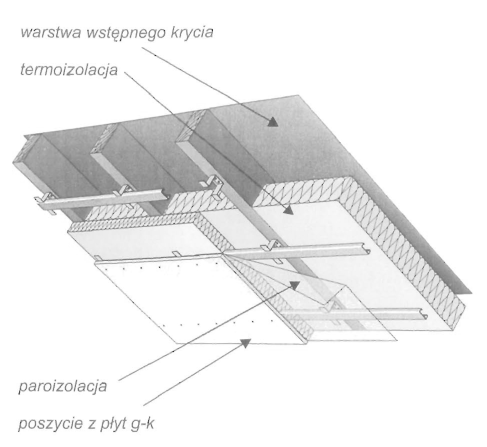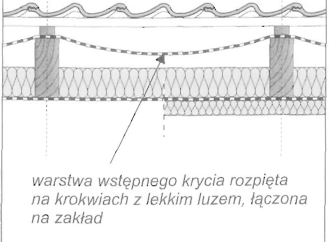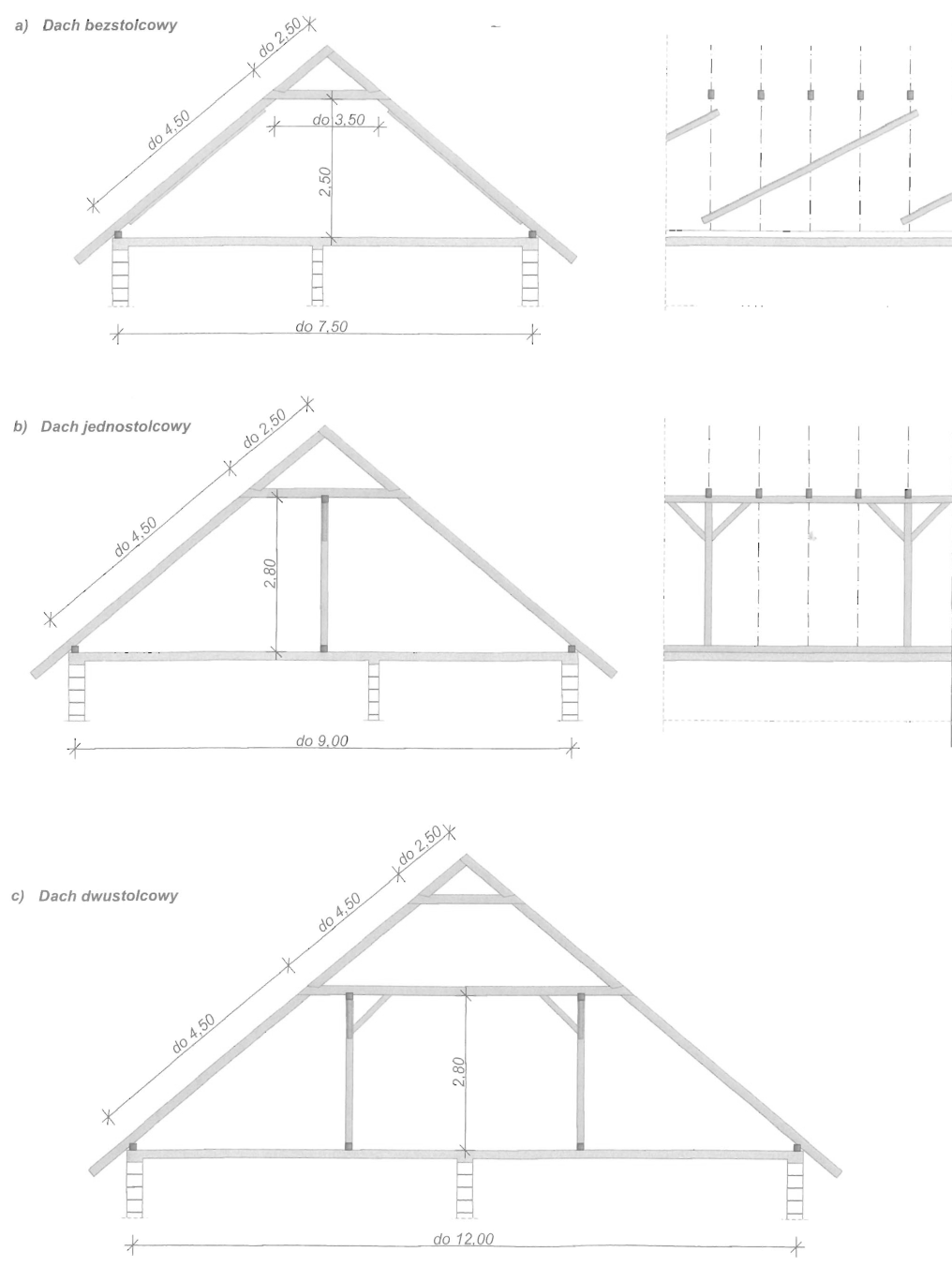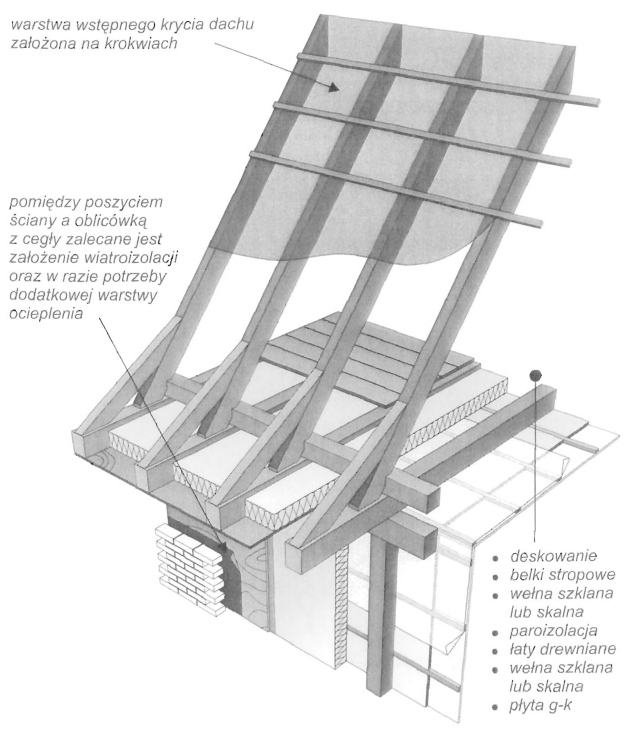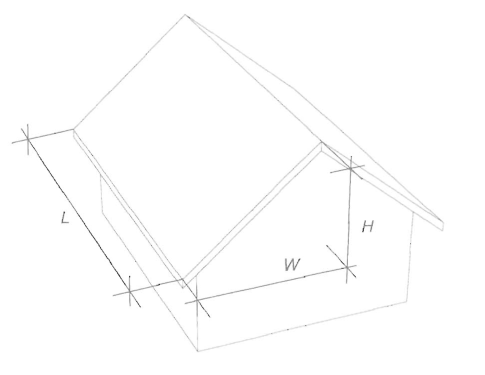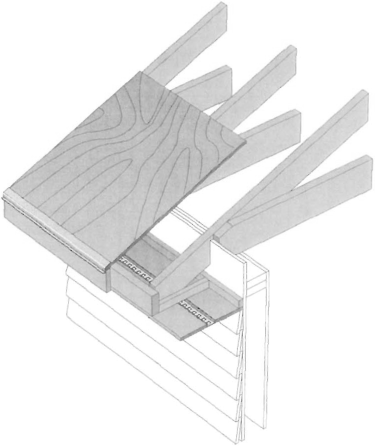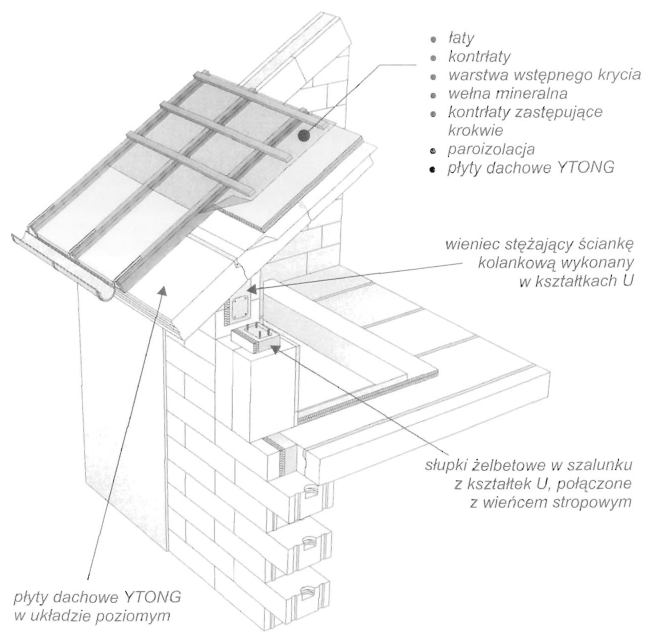 Poddasze użytkowe i nieużytkowe.
Poddasze użytkowe i nieużytkowe.
Podział dachów skośnych ze względu na funkcje:
• Dachy skośne z poddaszem nieużytkowym, pełniącym rolę strychu, przypominają w układzie warstw izolacji dwudzielny stropodach wentylowany. Izolacja termiczna jest rozłożona na stropie. Na połaci dachowej znajduje się jedynie pokrycie dachowe i warstwa wstępnego krycia, pełniąca rolę drugiej płaszczyzny odwodnienia dachu. Wentylacja jest wyprowadzona poprzez otwory w ścianach szczytowych i pod kalenicą Ruch powietrza powstaje wskutek oddziaływania wiatru (parcie i ssanie) oraz różnicy temperatury na zewnątrz i wewnątrz budynku. Wentylacja nie powinna nadmiernie oziębiać poddasza. Prędkość przepływu powietrza powinna być niewielka i wynosić około 0,2 m/s.
• Dachy skośne z poddaszem użytkowym powinny mieć konstrukcję zaprojektowaną w taki sposób, aby elementy wiązarów – jętki w więźbie jętkowej lub kleszcze w więźbie kleszczowo-płatwiowej, umożliwiały podwieszenie do nich sufitu na wysokości co najmniej 2,5 m. Na poddaszu użytkowym należy przewidzieć ścianki kolankowe, które ograniczają skosy dachowe do wysokości około 90 cm. Funkcję ścianek działowych mogą pełnić podwyższone ściany zewnętrzne lub ścianki cofnięte do wnętrza (co zmniejsza powierzchnię użytkową).
Prawidłowe rozwiązanie poddasza użytkowego wymaga starannego zaprojektowania rozwiązania termoizolacji, gdyż połać dachowa jest przegrodą chroniącą wnętrze przed czynnikami zewnętrznymi.
Na ocieplone połacie dachowe składa się szereg warstw, z których każda pełni określoną rolę:
– warstwa zewnętrzna, czyli pokrycie dachu, odprowadza z połaci wodę opadową,
– wentylowana szczelina powietrzna pozwala na przepływ powietrza pod pokryciem dachowym, od szczeliny wlotowej przy okapie do wylotu pod kalenicą,
– warstwa wstępnego krycia stanowi drugą płaszczyznę odwodnienia dachu, która zapobiega zawilgoceniu termoizolacji np. na skutek podwiewania kropel wody lub pyłu śnieżnego przez nieszczelności między elementami wierzchniego pokrycia dachu,
– warstwa izolacji termicznej z wentylowaną szczeliną powietrzną, która stanowi ocieplenie wypełniające przestrzeń między krokwiami,
– izolacja paroszczelna z folii aluminiowej lub polietylenowej zapobiega kondensacji pary wodnej w warstwie ocieplenia,
– płyty gipsowo-kartonowe lub boazeria drewniana, będące poszyciem wewnętrznym.
